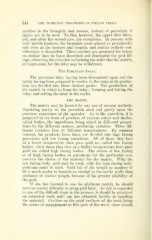Page 686 - My FlipBook
P. 686
344 THE TECHNICAL PROCEDURES IN FILLING TEETH.
cavities in the bicuspids and molars, instead of porcelain, if
inlays are to be used. To this, however, the upper first bicus-
pid, and often the second also, are exceptions. In persons with
very mobile features, the bicuspids come almost as prominently
into view as the incisors and cuspids, and similar esthetic con-
sideration is demanded. These cavities are prepared for inlays
on similar lines to those described and illustrated for gold fill-
ings, observing the rules for so forming the walls that the matrix,
or impression, for the inlay may be withdrawn.
The Porcelain Inlay.
The porcelain inlay having been determined upon and the
cavity having been prepared to receive it, the steps in its produc-
tion are divided into three distinct parts: The production of
the matrix in which to form the inlay ; forming and baking the
inlay, and setting the inlay in the cavity.
THE matrix.
The matrix may be formed by any one of several methods,
depending partly on the porcelain used and partly upon the
previous experience of the operator. As to the porcelain, it is
prepared in the form of powders of various colors and shades,
called bodies, the ingredients being mixed in different propor-
tions by the different makers, producing varieties. These dif-
ferent varieties fuse at different temperatures. By common
consent, the products from these are divided into high fusing
porcelains and low fusing porcelains. All of those that fuse
at a lower temperature than pure gold are called low fusing
bodies, while those that fuse at a higher temperature than pure
gold are called high fusing bodies. The choice of low fusing
or of high fusing bodies or porcelains for the particular case
controls the choice of the material for the matrix. With the
low fusing body, gold may be used ; with the high fusing body,
platinum must be used. Gold foil of the weight or number of
60 is much easier to burnish or swedge to the cavity walls than
platinum of similar weight, because of the greater pliability of
the gold.
If one has learned to use the platinum matrix, he should
have no special difficulty in using gold later. As this is regarded
as one of the difficult steps in the process, it should be practiced
on extracted teeth until one has obtained facility in handling
the material. Cavities on the axial surfaces of the teeth being
the easier of management in this part of the work, these should


